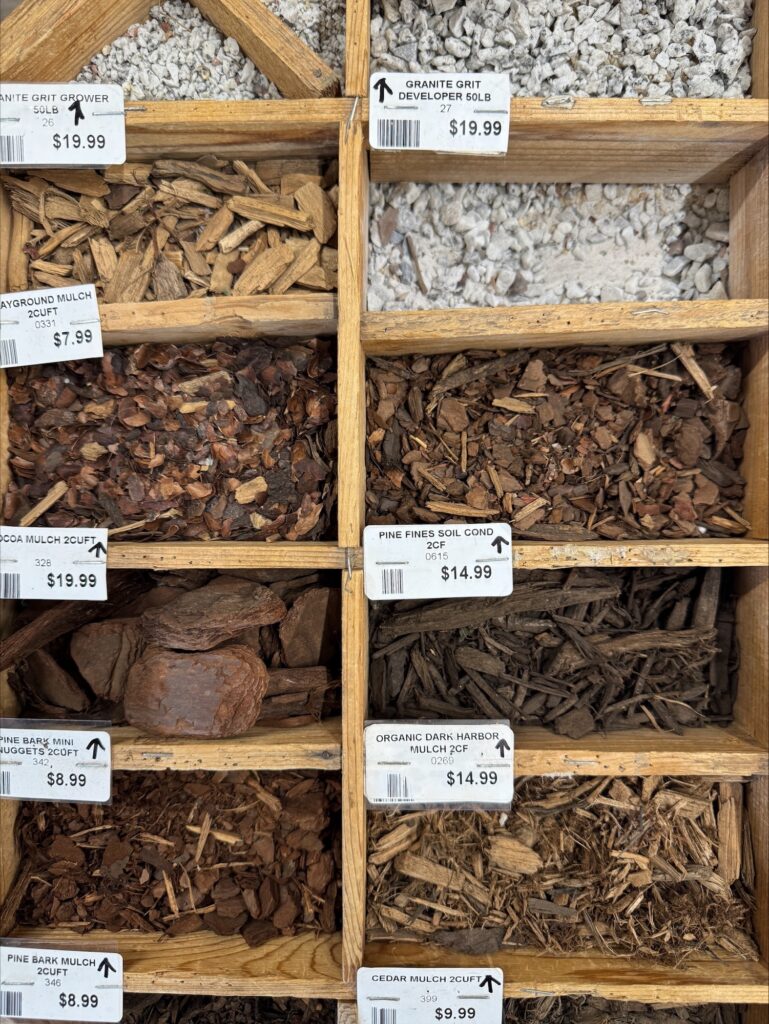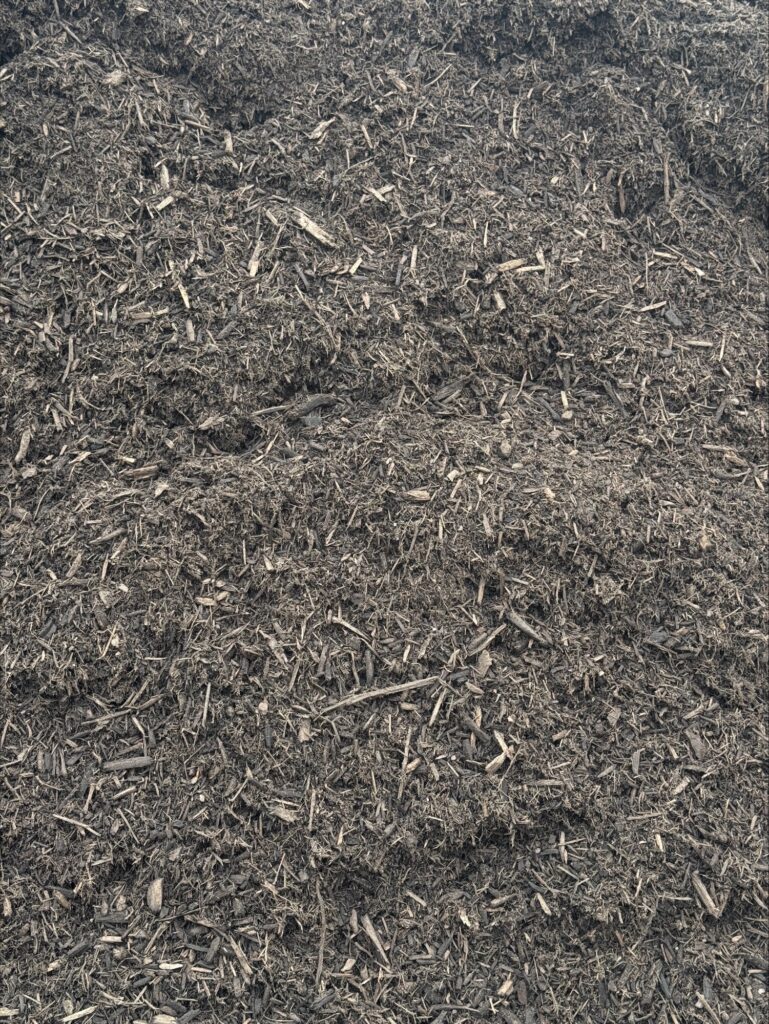Hello fellow mediocre gardeners, how are you coping with this sweltering heat? You’re struggling, right.
How do you think your garden is doing then? That’s why it’s time to talk about mulching and also because Anna emailed to ask, “How do I mulch without accidentally suffocating my plants and are mulch volcanoes useful?” Oh Anna! If I got a dollar for every time someone mentioned the words “mulch volcano” I’d be rich. Mulching can make a huge difference in your garden’s health, but it’s important to get the technique right.
The right mulch and the right amount helps plants and trees retain moisture, prevent weeds, and improve soil health, all while keeping your garden looking neat.
What You’ll Need
Before we get our hands dirty, let’s gather some essentials:
- Organic Mulch – Go for natural materials like shredded leaves, pine needles, wood chips, or straw. Locally sourced mulch from Primex or your township is even better!
- A Rake or Your Hands – To spread the mulch evenly around your plants.
- Water – Moist soil beneath the mulch helps keep roots hydrated.
- Newspaper or Cardboard (Optional) – Placing these under mulch can create an extra barrier against weeds. Over time the newspaper and cardboard will break up and be absorbed by the soil.
How to Mulch Like a Pro
- Choose the Right Mulch – Avoid synthetic or dyed mulches. Natural options provide nutrients as they break down.
- Clear the Area – Remove existing weeds before applying mulch to prevent them from sprouting through. Or you can use cardboard or newspapers on top of the weeds to suffocate them, and mulch will hold the cardboard or newspaper in place. Over time the cardboard or paper will breakdown into the soil.



I’m going to stop here for a second because these next two points are SUPER important.
- Apply a Layer (But Not Too Much!) – A 2–3-inch layer is ideal. Too much mulch can block air and water from reaching roots.
- Keep It Away from Stems and Trunks – Avoid piling mulch directly against plant stems or tree trunks, which can cause them to rot. Think of your mulching here like a donut. You want to create a ring like a donut around the base of the tree away from the trunk.
- Refresh as Needed – Over time, mulch decomposes and enriches the soil. Reapply annually or as necessary to maintain an effective layer.
Best Mulch Choices
- Shredded Leaves – Free from your township, natural, and great for attracting beneficial insects.
- Pine Needles – Excellent for acid-loving plants and light enough to avoid smothering seedlings.
- Bark Chips or Wood Mulch – Long-lasting and great for moisture retention.
- Straw – A good moisture barrier but be sure to use weed-free or another name for it is salt hay straw.
Mulching is one of the simplest ways to keep your native garden healthy and thriving. By choosing the right materials and applying them correctly, you’ll create a sustainable, low-maintenance landscape that supports local wildlife and pollinators.
My favorite mulch? The leaves from last year’s fall and if you leave the leaves, you get to protect all kinds of insects throughout winter and give a nice nesting place to things like lightning bugs. It also solidifies your status as a mediocre gardener because you don’t have to tidy up too much. See, it pays to be mediocre 
For more of The Mediocre Gardener’s column with Glenside Local, you can click here. For more on Primex Garden Center of Glenside, you can visit their website and Facebook page.
For all the latest news, follow us on Facebook or sign up for Glenside Local’s “Daily Buzz” newsletter here.
Photos: Courtney Paoli, Primex

